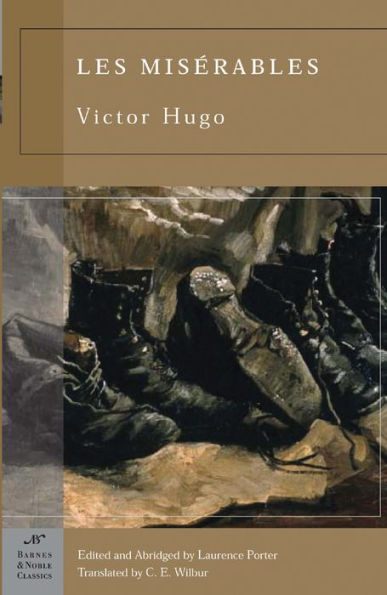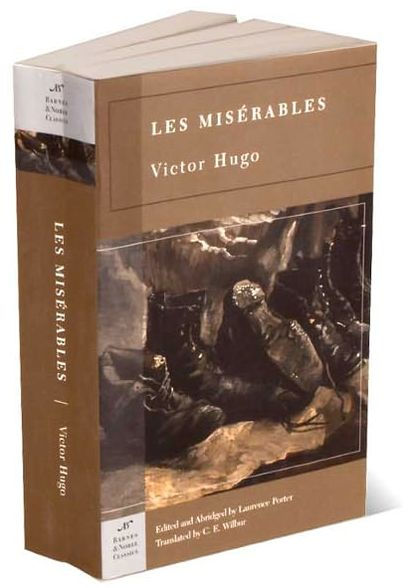Read an Excerpt
From Laurence Porters Introduction to Les Miserables
The Great French Novel
Why do we still read Les Misérables? Not too many years ago, it was added to the required reading list for the agrégation in French literature, the competitive state examination that qualifies teachers at advanced levels. Its moral, social, and political messages remain pertinent to many of the situations we confront. But above all, Les Misérables is the unrecognized “Great French Novel,” analogous to Herman Melville’s Moby Dick, Alessandro Manzoni’s The Betrothed, Leo Tolstoy’s War and Peace, or Thomas Mann’s The Magic Mountain. I do not mean that it is necessarily the greatest French novel: one might prefer Proust’s À la recherche du temps perdu, just as in the literature of other languages, one might prefer Faulkner’s The Sound and the Fury, James Joyce’s Ulysses, Fyodor Dostoevsky’s The Brothers Karamazov, Kafka’s The Trial, or Gunther Grass’s The Tin Drum. The social, moral, and intellectual range of Hugo’s characters far exceeds what we find in all these other great authors, whose social density is nonetheless noteworthy. Beyond that impressive achievement, Les Misérables in many respects conforms to an ideal type, an influential theoretical entity whose traits are realized only in part by any concrete example.
The Great National Novel is capacious: it covers substantial amounts of time and space. It contains many vivid characters belonging to varied social conditions: it is not intimist in its setting, not a drawing-room adventure limited to family, friends, and courtship. It tells its sprawling story in a traditional mode, dominated by the controlling perspective of an omniscient author who, despite flashbacks and digressions, generally proceeds steadily forward, following the protagonists as they age. It usually deploys la grande histoire (“big” history, revolutions and wars) in the background, although the main characters, affected as they are by political dramas, usually are not leading players in them. It implies some connection between individual and national destinies. By the time he wrote Les Misérables, Hugo had had more direct political experience at the highest levels of government than had many other writers of his time. Very often the Great National Novel suggests the looming presence of the supernatural, hidden but at times glimpsed behind the scenes, or during “second states” of consciousness such as dreams, drug experiences, visions, hallucinations, illness, passion, or prayer. Hugo began writing Les Misérables shortly after spending several years of evenings at mystical séances, and after elaborating the religious system, based on punitive and redemptive reincarnation, that he finally made explicit in his visionary poem La Fin de Satan. The Great National Novel usually relegates artistic self-consciousness to the background: it does not become a Künstlerroman—the portrait of the artist as a young man—nor does it foreground the cleverness of the writer’s craft by radical experiments in point of view, plot structure, stylistic innovations, or characterization. Instead, the Great National Novel quietly insinuates the mature author’s hard-won wisdom through a series of aphorisms, or pithy, penetrating generalizations about human nature. These maxims demonstrate the author’s ability to synthesize many experiences. The digressions are miniature essays on varied subjects—authors of the Great National Novel are born essayists and amateur philosophers—that aim to instruct the audience. In contrast to the Self-Conscious Novel (Cervantes, Sterne, Diderot), digressions do not serve to tease the expectant reader by delaying the forward progress of the story, but to establish the writer’s authority as a portraitist of a wide world by giving glimpses into his or her encyclopedic knowledge.
The Influence of Les Misérables
In the late nineteenth century, Les Misérables anticipated both the naturalistic movement and its opposite pole, the Catholic Renaissance. Whereas the realistic novel typically deals with the middle class, Naturalism deals with the working class and with the underworld. Repetitious, menial labor is difficult to dramatize in a novel; but Hugo devotes ample space to describing members of the working class at play (Fantine and her friends), and the criminal class at work or trying to escape from the police. In the Paris scenes, he depicts the grisettes (young proletarian women who wore gray smocks at their jobs, and who were stereotypically easy targets for seduction). Notably in the chapter “L’Année 1817,” he emphasizes the inequities of their sexual exploitation by middle-class men in a direct way that Zola, with his sexual insecurities, could not (compare Zola’s Nana, 1880, depicting female sexuality as a monstrous source of social corruption). Hugo has not yet received due credit for anticipating the naturalist movement in the chapters devoted to Fantine’s life both in Paris and in her hometown.
The Catholic Renaissance, which deplored Hugo’s bombastic, prophetic rhetoric and his pretensions to revealing a new religion, also derived considerable indirect inspiration from Hugo. Like Claudel, who detested him and made a point of saying so, like Mauriac, or like Bernanos, from thirty to ninety years after him, Hugo in 1862 dramatizes his heroes’ relentless pursuit by conscience, meaning our instinctive awareness of God.
Hugo’s appeal to posterity depends not only on the awe-inspiring range and depth of his masterpiece, Les Misérables, not only on his inspiring, idealistic visions of political and social progress, but also on the acute visual sense that put him well ahead of his time, but that can be captured and reinforced by modern media such as film and television. His extraordinary visual imagination is both impressionistic—sensitive to colors, including colored shadows, and to changes in light—and cinematic, aware of varying angles of vision and shifting vantage points. It involves an exceptional responsiveness to both light and motion. One can find striking proof of this in Hugo’s correspondence. He does not write interesting letters; he wrote letters while resting from his continuous periods of creative work on most days, on his feet in front of his writing stand from 5 a.m. to noon, with a cup of hot chocolate nearby. In letters, he cares more about making contact with others than about thinking of precisely what he has to say. But the one interesting letter in the first volume of his correspondence describes his first ride on a train, and his fascination with how the landscape blurs and flickers as he passes it at speeds far greater than he had ever experienced before. Compare the description of what Jean Valjean sees on his carriage ride to denounce himself at the court in Arras. Notre-Dame de Paris provides even better examples. Hugo anticipates Claude Monet’s famous series of paintings of the same subject when he evokes the changing light on the façade of the Cathedral of Notre Dame. Following this passage, he executes the verbal equivalent of a zoom-in shot to approach a balcony on which an engagement party has gathered. Earlier, the description circling Paris from the top of the cathedral towers (“A Bird’s-Eye View of Paris”) anticipates the cinematic technique of the traveling shot. At the beginning of the twentieth century, polls rated Hugo as the greatest nineteenth-century French poet, but his gifts as a storyteller in his plays and novels were fully acknowledged on an international scale only when Les Misérables was produced as the first full-length feature film in France in 1909; within a few years Albert Capellani of Pathé and André Antoine of Le Théâtre-Libre produced a noteworthy series of silent films of Hugo’s works: Les Misérables (1912), the play Marie Tudor (1912), and the novels Quatrevingt-treize (1914) and Les Travailleurs de la mer (1918). Lon Chaney’s celebrated performance as Quasimodo in W. Worsley’s film The Hunchback of Notre-Dame de Paris (1924) consolidated these triumphs. More recently, television versions of the plays Les Burgraves (1968) and Torquemada (1976) were triumphs. Today (November 2002), Alain Boublil and Claude-Michel Schoenberg’s stage version of Les Misérables (1980), inspired by the rock opera Jesus-Christ Superstar, is still running in New York and on tour in the United States. It eclipsed the record number of international productions of a musical, previously held by Cats (see Porter, Victor Hugo, pp. 152–156).





